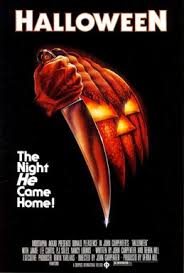
Introduction
Released in 1978, Halloween, directed by John Carpenter, is widely regarded as one of the most influential horror films in cinematic history. As a pivotal film in the slasher genre, it set the tone for countless subsequent films and solidified Halloween as a key cultural phenomenon celebrated every October. With its low-budget production, eerie score, and a gripping tale of survival, the film has left an indelible mark on pop culture and the way horror stories are told.
Main Body
Halloween follows the story of Michael Myers, a psychotic murderer who escapes from a psychiatric hospital and returns to his hometown to stalk babysitter Laurie Strode, played by Jamie Lee Curtis. The film used simple yet effective cinematography, with Carpenter filming on a budget of only $300,000. This financial constraint didn’t hinder its creative vision; instead, it established many tropes that would define the genre, such as the final girl concept, sparse dialogue, and a relentless antagonist.
The film’s score, also composed by Carpenter, is minimalist yet haunting, characterized by its iconic piano melody. This score has become synonymous with the horror genre and is recognized by audiences worldwide, contributing significantly to the atmosphere of dread and suspense.
In its initial release, Halloween grossed over $70 million in the United States, a phenomenal success that demonstrated the potential for horror films to attract large audiences. The film’s profitability led to the establishment of multiple sequels, remakes, and spin-offs, creating a franchise that entered the realm of cultural significance. The enduring popularity of Halloween has prompted annual events, themed merchandise, and a resurgence of interest in slasher films among new generations of viewers.
Conclusion
As we reflect on Halloween 1978, its significance cannot be overstated. It not only inaugurated a new era of horror cinema but also transformed the way audiences engaged with terror on screen. The film’s legacy has influenced filmmakers and future horror storytelling, paving the way for innovative trends in horror. With its themes of fear, survival, and intrigue, Halloween continues to be celebrated and dissected, proving that the terror of Michael Myers remains relevant across decades. As Halloween approaches, this iconic film invites both dedicated fans and new audiences to revisit its chilling narrative, reinforcing its status as a timeless classic within the horror domain.



